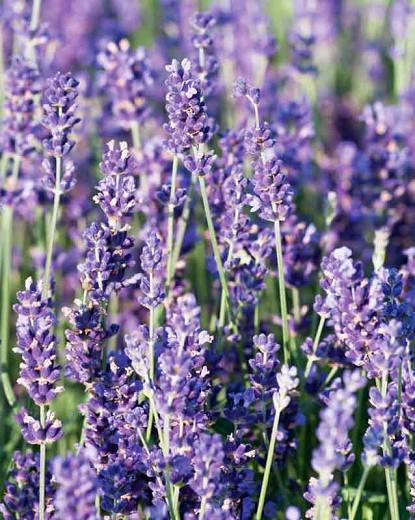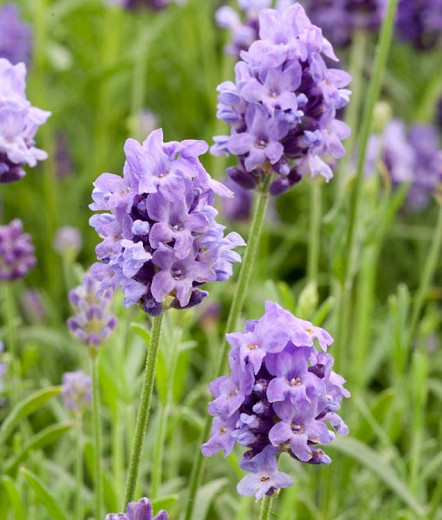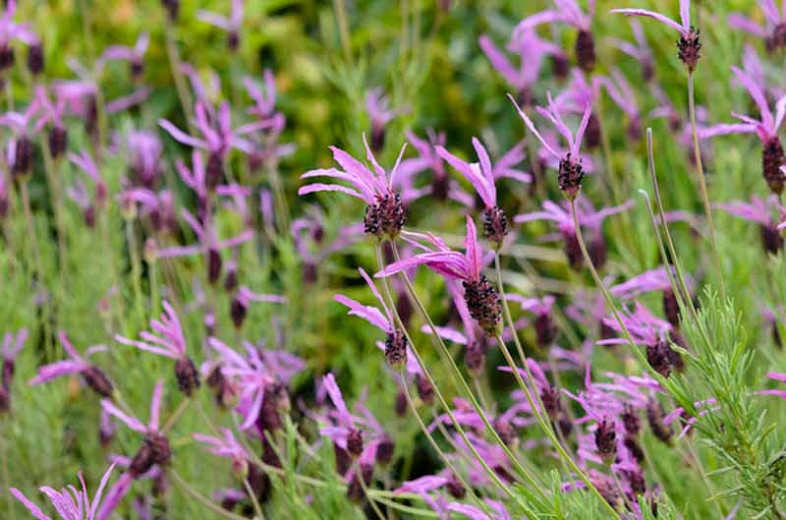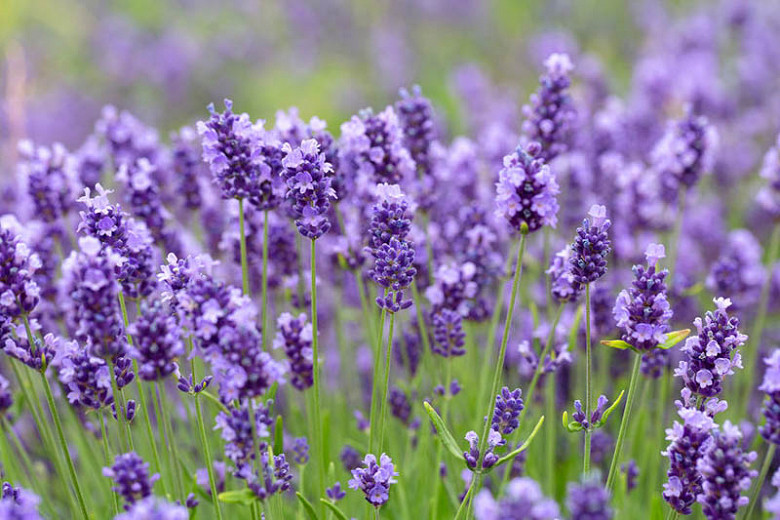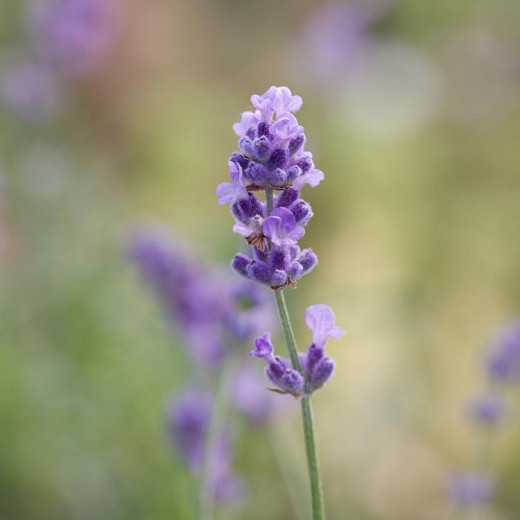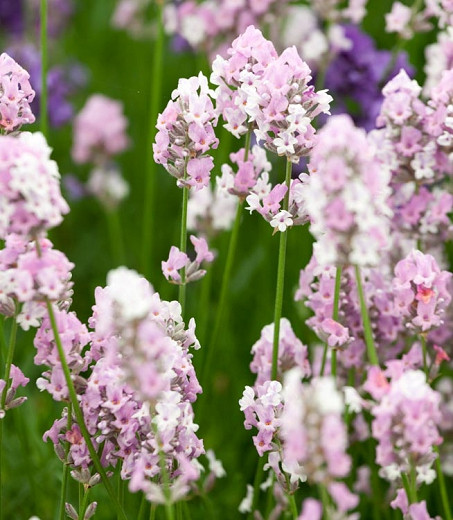Lavandula angustifolia (English Lavender)
Often associated with the famous purple fields of Provence, Lavandula angustifolia, also called English Lavender, is not native to England but to the Mediterranean. Ideal for garden borders, cooking and potpourri, this lavender also produces the best oils.
Often associated with the famous purple fields of Provence, Lavandula angustifolia, also called English Lavender, is not native to England but to the Mediterranean. Ideal for garden borders, cooking, and potpourri, this lavender also produces the best oils.
- Delightfully fragrant when brushed against or crushed, English Lavender is celebrated for the wispy inflorescences that adorn the tip of each upright stem creating lovely drifts of cool colors that sway in the summer breeze.
- Flowering typically occurs in early to mid-summer and tends to last 3-4 weeks. These Lavenders usually bloom once but may experience a weak second flush after pruning.
- Blue-purple, lavender, violet-blue, or white-pink, are now available depending upon the cultivar.
Guide Information
| Hardiness | 5 – 9 |
|---|---|
| Heat Zones | 5 – 8 |
| Climate Zones | 2, 3, 4, 5, 6, 7, 8, 9, 10, 11, 12, 13, 14, 15, 16, 17, 18, 19, 20, 21, 22, 23, 24 |
| Plant Type | Herbs, Perennials, Shrubs |
| Plant Family | Lavandula – Lavender |
| Exposure | Full Sun |
| Season of Interest | Summer |
| Height | 1' – 3' (30cm – 90cm) |
| Spread | 1' – 3' (30cm – 90cm) |
| Spacing | 36" (90cm) |
| Water Needs | Low |
| Maintenance | Average |
| Soil Type | Chalk, Loam, Sand |
| Soil pH | Acid, Alkaline, Neutral |
| Soil Drainage | Well-Drained |
| Characteristics | Dried Arrangements, Cut Flowers, Fragrant, Showy |
| Tolerance | Deer, Drought, Rabbit, Dry Soil, Rocky Soil |
| Attracts | Bees, Butterflies |
| Landscaping Ideas | Banks and Slopes, Beds and Borders, Edging, Hedges and Screens, Patio and Containers |
| Garden Styles | City and Courtyard, Coastal Garden, Gravel and Rock Garden, Informal and Cottage, Mediterranean Garden |

